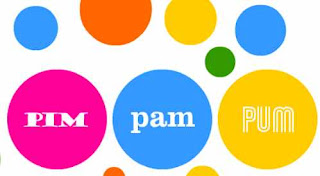
1. Social network vs. Community of practice
First of all, I would like to say that I think social network or 2.0 platforms such as facebook, twitter, among many others are very important for our lives. We can be connected with everything with just clicking our mouse. Students love to know things as fast as possible and if they are learning interesting and updated information, they will acquire it even faster, for example, facebook.
In this session we discussed about social networks and community of practice. The former is a platform that allows a user to create a network, especially a social one, and you get connected with people who have similar ideas and purposes as yours. The latter is a group of people who join in a group because they have a common interest in a specific area. They share a common interest, for example, VenTESOL. I think that an Internet user can learn from both web pages. It just depends on what you look for.

Community of practice or COPs is very interesting because the people who are in these groups are really interested in sharing what they know to other people. They desire to interact regularly with others and teach them how to be better webhead, for instance. They encourage people to work with ICT in their personal and professional lives. We also discussed the word “lurker.” It is a member of a community who seems not to be interested in any discussions. S/he does not participate and this may happen for two reasons. First, this person is afraid of making mistakes in front of everybody. Second, this person has participated in previous editions and s/he just pop in and out from time to time to know what the discussion is about. They do not have time to attend all sessions.

2. What is a webhead?
A webhead is an expert using platforms 2.0 and 3.0. The first webhead experts using these platforms were called Webheads in Action (WIA). Webheads belong to a community and they feel like part of a family because they spend a lot of time to work together virtually. There are different communities where people can belong to and share their experience and knowledge. For example:

2.1. Venelt (VEN-ENGLISH LANGUAGE TEACHING)
In this web page you can find all kinds of Venezuelan English teachers from different educational levels sharing their experience, questions and doubts.

2.2 Avealmec (ASOCIACIÓN VENEZOLANA PARA LA ENSEÑANZA Y EL APRENDIZAJE DE LENGUAGES MEDIADOS POR EL COMPUTADOR)
Venelt was created in 2006. Avealmec was created in 2007. This web page was created by teachers from different universities in Venezuela. The members who belong here are interested in training other teachers and everything related to ICT.

2.3. VenTESOL (VENEZUELA TEACHERS OF ENGLISH TO SPEAKERS OF OTHER LANGUAGES)
This web page gather teachers form Venezuela and other countries in order to share experience about ELT and leaning English as a Foreign or Second language.

3. Personal Learning Network (PLN)
So far we have seen how to interact with other people using 2.0 platforms, but there are other ways to share information in a faster way. PLN is that way because 21st century teachers can learn, share experience and ask questions and doubts with/from other colleagues. You can be really connected with other people and this is important for your professional life, you can meet people from other parts of the world, you can find out high school or university projects, among many other things. How can you do that? You can do it create your personal space using 2.0 platforms such as facebook or twitter. For example, I created a group on facebook called: Learning more about ICT. This is a private group just for my classmates of my master program. There they can share their experience about the ICT course we are taking this term and they can also watch videos related to my students and comment their ideas, doubts and knowledge. I am the administrator of that group and they are the users.



















